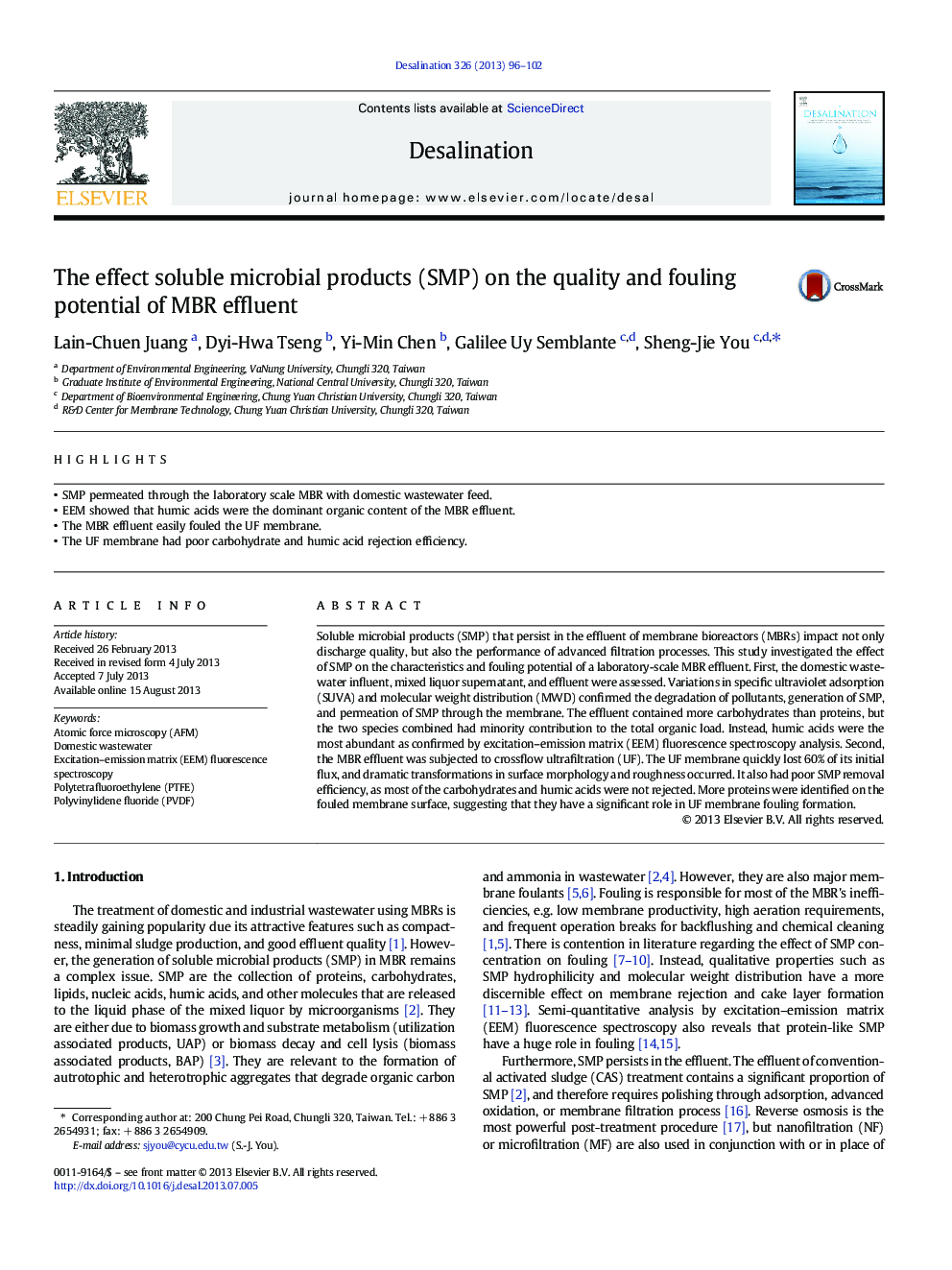| Article ID | Journal | Published Year | Pages | File Type |
|---|---|---|---|---|
| 7008573 | Desalination | 2013 | 7 Pages |
Abstract
Soluble microbial products (SMP) that persist in the effluent of membrane bioreactors (MBRs) impact not only discharge quality, but also the performance of advanced filtration processes. This study investigated the effect of SMP on the characteristics and fouling potential of a laboratory-scale MBR effluent. First, the domestic wastewater influent, mixed liquor supernatant, and effluent were assessed. Variations in specific ultraviolet adsorption (SUVA) and molecular weight distribution (MWD) confirmed the degradation of pollutants, generation of SMP, and permeation of SMP through the membrane. The effluent contained more carbohydrates than proteins, but the two species combined had minority contribution to the total organic load. Instead, humic acids were the most abundant as confirmed by excitation-emission matrix (EEM) fluorescence spectroscopy analysis. Second, the MBR effluent was subjected to crossflow ultrafiltration (UF). The UF membrane quickly lost 60% of its initial flux, and dramatic transformations in surface morphology and roughness occurred. It also had poor SMP removal efficiency, as most of the carbohydrates and humic acids were not rejected. More proteins were identified on the fouled membrane surface, suggesting that they have a significant role in UF membrane fouling formation.
Keywords
Related Topics
Physical Sciences and Engineering
Chemical Engineering
Filtration and Separation
Authors
Lain-Chuen Juang, Dyi-Hwa Tseng, Yi-Min Chen, Galilee Uy Semblante, Sheng-Jie You,
